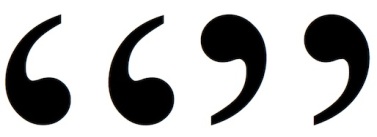The use of quotes or verbatims from participants is a typical and necessary component to any qualitative research report. It is by revealing participants’ exact language that the researcher helps the user of the research to understand the key takeaways by clarifying through illustration the essential points of the researcher’s interpretations. The idea is not to display an extensive list of what people said but rather provide quotes that have been carefully selected for being the most descriptive or explanatory of the researcher’s conceptual interpretation of the data. As Susan Morrow has written
the research to understand the key takeaways by clarifying through illustration the essential points of the researcher’s interpretations. The idea is not to display an extensive list of what people said but rather provide quotes that have been carefully selected for being the most descriptive or explanatory of the researcher’s conceptual interpretation of the data. As Susan Morrow has written
“An overemphasis on the researcher’s interpretations at the cost of participant quotes will leave the reader in doubt as to just where the interpretations came from [however] an excess of quotes will cause the reader to become lost in the morass of stories.” (Morrow, 2005, p. 256)
By embedding carefully chosen extracts from participants’ words in the final document, the researcher uniquely gives participants a voice in the outcomes while contributing to the credibility – and transparency – of the research. In essence, the use of verbatims gives the users of the research a peek into the analyst’s codebook by illustrating how codes associated with particular categories or themes in the data were defined during the analysis process.
As an example, the analysis of data from a recent in-depth interview study among business decision makers determined that the broad concept of “relationships” was a critical factor to driving certain types of decisions. That alone is not a useful finding; however, the analysis of data within this category uncovered themes that effectively gave definition to the “relationships” concept. As shown below, the definitional themes, in conjunction with illustrative quotes from participants, give the reader a concise and useful understanding of “relationships.”

In this way, quotes contribute much-needed transparency to the analytical process. As discussed elsewhere in Research Design Review (e.g., see this April 2017 article), transparency in the final document is built around “thick description,” defined as “a complete account…of the phenomena under investigation as well as the rich details of the data collection and analysis processes and interpretations of the findings” (Roller & Lavrakas, 2015, p. 363). One of the ingredients in a thick description of the analytical process is the details of code development and the coding procedures. The utilization of verbatims from participants in the final report adds to the researcher’s thick description (and transparency) by helping to convey the researcher’s thinking during data analysis and how that thinking steered the creation and application of codes.
Morrow, S. L. (2005). Quality and trustworthiness in qualitative research in counseling psychology. Journal of Counseling Psychology, 52(2), 250–260. http://doi.org/10.1037/0022-0167.52.2.250
Image captured from: https://cdmginc.com/testing-corner-quotation-marks-add-power/
Margaret,
A good reference, as well as making a good point about the integration and grounding of the participant’s voice with the researcher’s/ evaluator’s interpretations and recommendations. This exemplfies the strentgh of a qualitative approach!
LikeLike